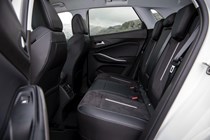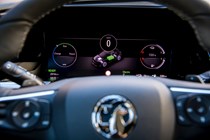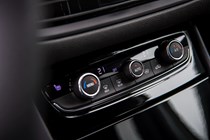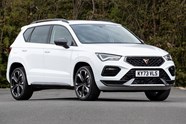
Vauxhall Grandland GSe (2023-2024) review
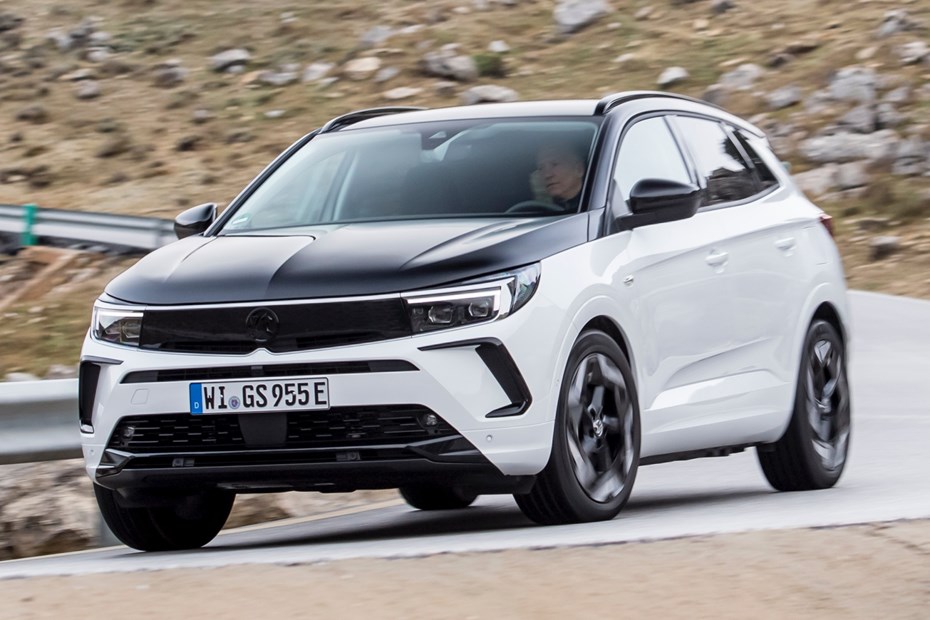
At a glance
| Price new | £45,850 - £46,350 |
|---|---|
| Used prices | £19,006 - £27,361 |
| Road tax cost | £620 |
| Insurance group | 34 |
Get an insurance quote with

|
|
| Fuel economy | Not tested to latest standards |
| Number of doors | 5 |
| View full specs for a specific version | |
Available fuel types
Hybrid
Pros & cons
- Low company car tax
- Punchy acceleration
- Well equipped
- Firm ride
- Small boot
- Not much fun
Vauxhall Grandland GSe (23-24) rivals
Overview
If we’re to believe the brochure, the Vauxhall Grandland GSe isn’t just another plug-in hybrid hybrid SUV. The clue is in that GSe badge and what it stands for, Grand Sport electric. Unlike previous performance Vauxhalls, anything with that on the back will be powered partially or fully by electricity.
This isn’t just a trim level, either. The highest power output available for any given range will be reserved for GSe, and there are tweaks to the chassis, too. These include 19-inch wheels, stiffer springs, some clever dampers and faster-acting steering. More aggressive bumpers and a black roof also feature, along with sports seats.
The most obvious plug-in hybrid rivals are the closely related Peugeot 3008 Hybrid4, with the Kia Sportage and Volkswagen Tiguan also vying for company car honours. You might also be considering other pumped-up SUVs such as the Volkswagen Tiguan R and Cupra Ateca.
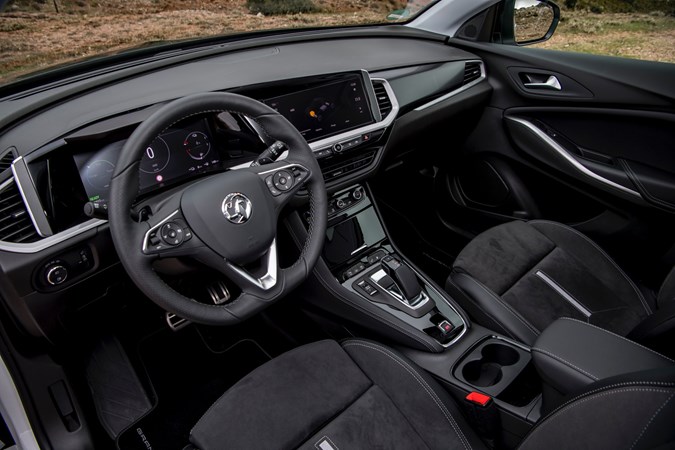
What’s it like inside?
Jump inside the Vauxhall Grandland GSe and you’re met by two big digital displays, one for the driver and another taking care of infotainment. They’re high resolution, but the driver’s display isn’t as configurable as that found in the Tiguan and the infotainment is bettered by the Kia Sportage’s system.
At least you’ll appreciate the comfortable Alcantara trimmed sports seats, while the contrast stitching dotted around is a nice touch. However, the seats could do with being a more supportive during quick cornering and it just doesn’t feel a great deal different to regular Grandlands. That means it also looks a little dated in places, although that brings partially-physical heater controls rather than fiddly touch sensitive ones like a Tiguan. Hooray!
There’s enough room for four six-footers to not feel hemmed in, but the Tiguan and Sportage give you more space to stretch out. Boot capacity is a disappointing 390-litres – about the same as a family hatchback – because of the hybrid componentry beneath the floor.
If you want a bit more detail on the Grandland GSe’s space, practicality and infotainment, have a look at our main Vauxhall Grandland review.
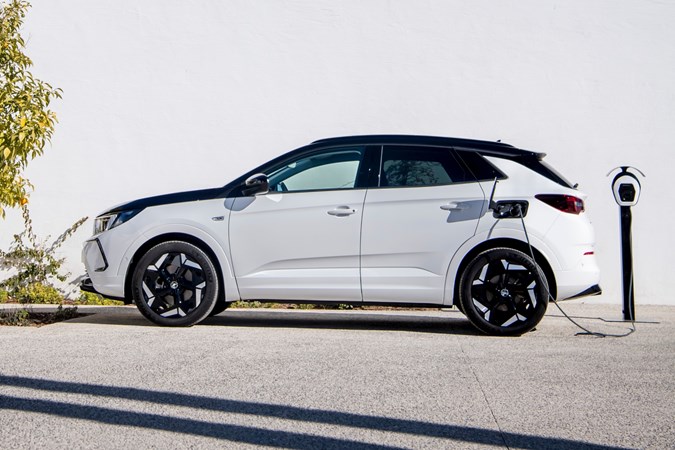
Range and charging
In official tests, the Grandland GSe covered a respectable 41 miles on electricity, putting it into a lower company car tax bracket than the Volkswagen Tiguan eHybrid. A Kia Sportage PHEV will go slightly farther and sits in the same BIK band.
Charging the 14.2kWh battery pack takes five hours 45 minutes using a three-pin plug and four hours with the standard 3.7kW onboard charger using a Type-2 cable. An optional 7.4kW charger drops this to two hours on a wallbox that can support it, again using the Type-2. There’s no rapid charge capability.
What’s it like to drive?
The stiffened suspension quickly makes itself felt, with the GSe picking up on surface imperfections that you wouldn’t notice in a Tiguan eHybrid or Sportage. Even other 300hp or so performance SUVs such as the Cupra Ateca and Tiguan R are less fidgety around town. It’s more forgiving than you might initially expect over bigger bumps, but still on the firm side.
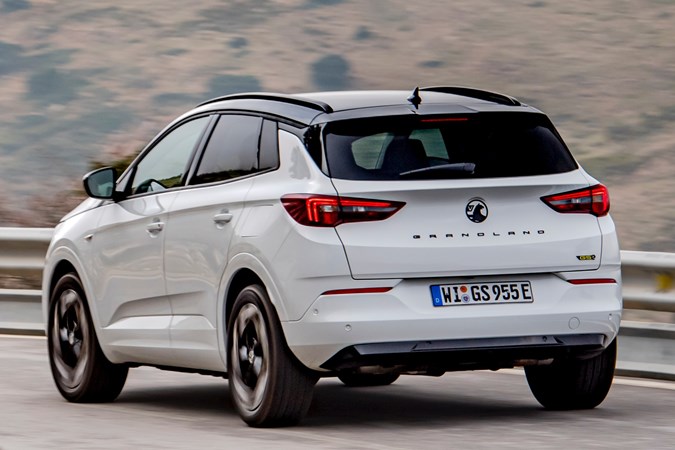
It does give the GSe tighter body control than the regular Grandland PHEV and a greater willingess to corner enthusiastically. However, the eco-biased tyres limit grip compared to a proper fast SUV, while the nose always wants to run wide should you get on the power early out of a tight corner. A Tiguan R’s all-wheel drive system is much better at firing you out of the bends, while the GSe’s steering never really keys you into the road’s surface. Manual mode on the gearbox also frustrates, hurting driver involvement, too.
Performance is good, with the 6.1 second 0-62mph time easily accessed thanks to good traction. You’ll need charge in the battery to get the full 300hp, with Sport mode sacrificing fuel economy to help keep the volts up. It also suffers from a hesitant gearbox, with kickdown coming in two stages. You’ll first feel the electric motor push you forward before the engine thrashily joins in. Thankfully it’s far quieter in normal use.
Acceleration is more modest in EV mode, yet sufficient for keeping up with the general flow of traffic up to 84mph.
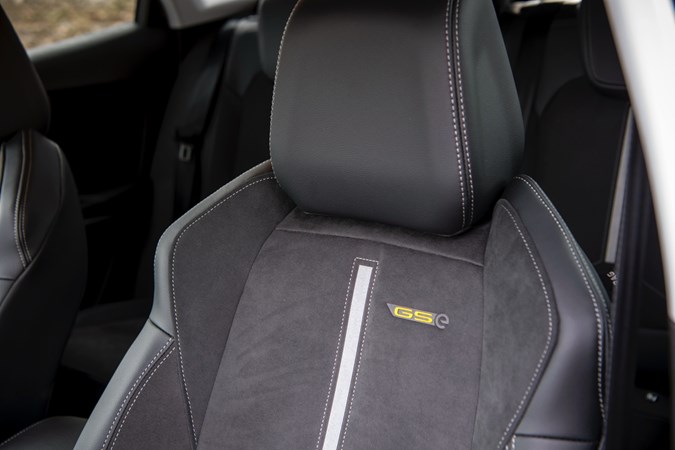
What models and trims are available?
The Vauxhall Grandland.GSe only comes in one well-specified flavour, with the only options being night vision shown on the driver’s display and the aforementioned faster charger.
Standard equipment include heated GSe branded front sports seats and steering wheel, keyless entry and start, dual-zone climate control, a gesture-controlled electric tailgate, adaptive auto lights and wipers, adaptive cruise control with lane position assist, sat nav, front and rear parking sensors, a surround view camera, blind spot monitoring and rear cross traffic alert. That makes the initially steep-looking price significantly more palatable.
Read on for our verdict on the Vauxhall Grandland GSe.








